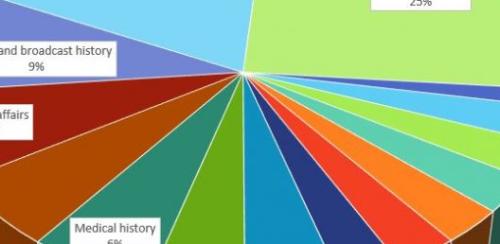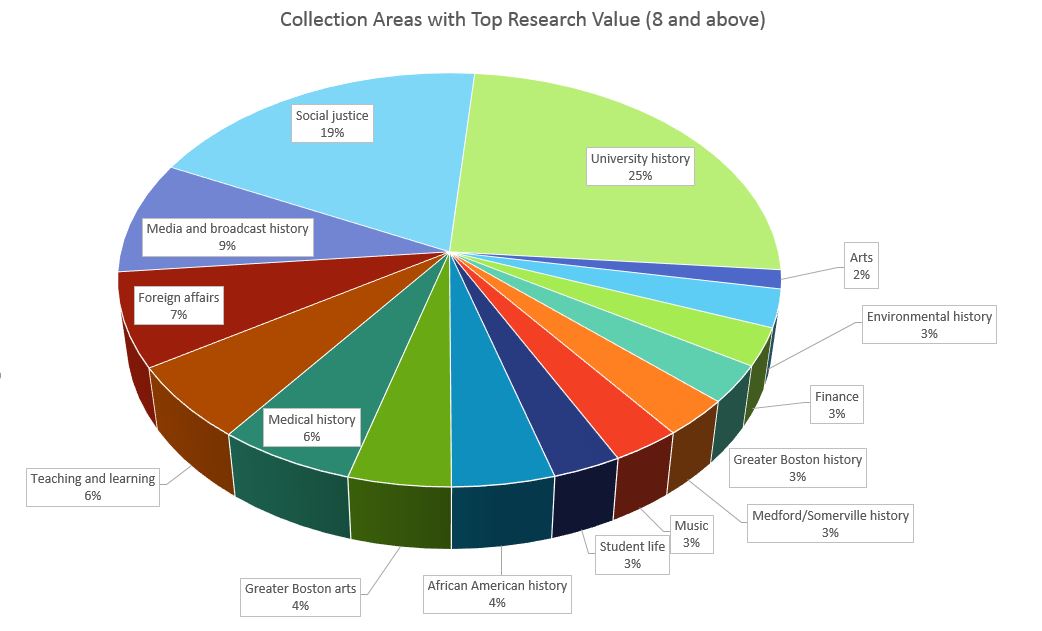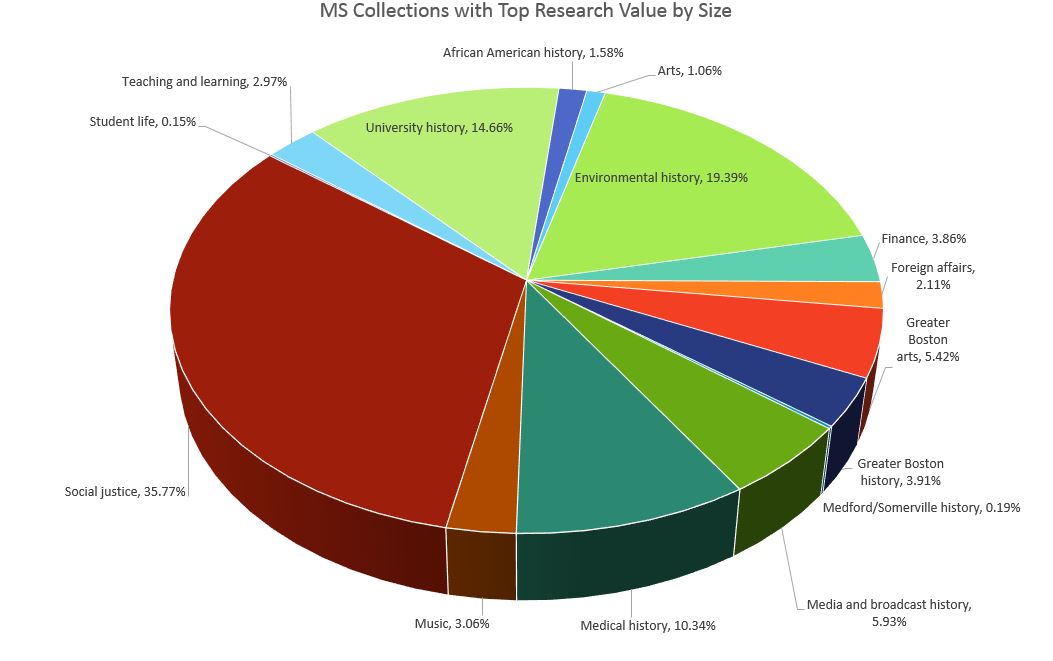
Archives and Special Collections are sometimes described as mysterious or even “hidden.” In DCA we’ve been working to make information about our collections known and accessible through our outreach efforts, exhibits, and work with faculty and students in classes. Our collections management team has also been working to gather information about the material in our care through a multi-year collection assessment survey that addressed every manuscript and university archives collection at DCA. The term “collections assessment" is used to refer to the systematic, purposeful gathering of information about archival collections. It often includes collection surveys, and the creation of data to support appraisal, processing and digitization priorities, conservation decision-making, and overall collection management. In DCA we also used the survey to enhance public descriptions of our material, and ensure that every collection was discoverable online. The project, led by Collections Management Archivist Adrienne Pruitt, involved numerous DCA staff and graduate student assistants and is a major step forward in archival practice and stewardship at Tufts. DCA has recently been analyzing the results of this survey, which was carried out between January 2016 and June 2018. The survey ran in two stages, from February 2016 to September 2017 and October 2017 to July 2018. Altogether, 439 collections were surveyed, encompassing 8,004 cubic feet. The survey helped us to improve our publicly available description and bring it all in line with recognized the archival standard DACS, provided a snapshot of the physical condition of our collections, and improved our collection management capabilities. For the first time, all of our holdings, including new and minimally processed accessions, are visible and can be requested via the Tufts Digital Library. The survey revealed damage that was prioritized for conservation, gave us a more accurate measurement of the size of our holdings, and allowed us to reconsider housing and space needs. We rated all of the collections on documentation quality, research interest, and quality of existing description, and assigned collecting areas to the manuscript collections. Analysis of these categories has helped us to better understand our collecting strengths, prioritize processing and digitization projects, and see areas for acquisitions that might support our existing holdings. For example, our manuscript collections with the greatest research value are concentrated in university history (25%) – not surprising. But our second highest rated subject area is social justice (19%), a result that substantiates something that we had felt intuitively to be true but had not previously measured.

When collection size is also taken into consideration, social justice collections account for almost 36% by volume of our collections with the highest research values.

Leaving research value aside and simply considering the prevalence of certain subjects in our manuscript holdings, we can see that while we have a strong concentration in university history and teaching and learning, we have many fewer collections that document student life or student activism. Our recent initiatives to actively acquire student organizational records will, we hope, help to fill in some of these gaps in the historical record for future researchers. Analyzing the current processing and description levels of our materials revealed 126 collections that would benefit from further work. The processing of these collections has been prioritized based on research value and actual use and has been scheduled through 2023, allowing us to plan our work in a reasonable and flexible way that will help us meet overall departmental goals. Digitization of high value collections is also being analyzed and prioritized to make materials increasingly available to researchers all over the globe. This period of analyzing and reporting will, along with the improved and standardized collection descriptions already online, help us make more of our collections widely available to more patrons.







